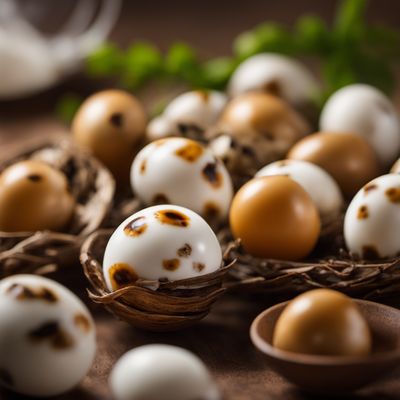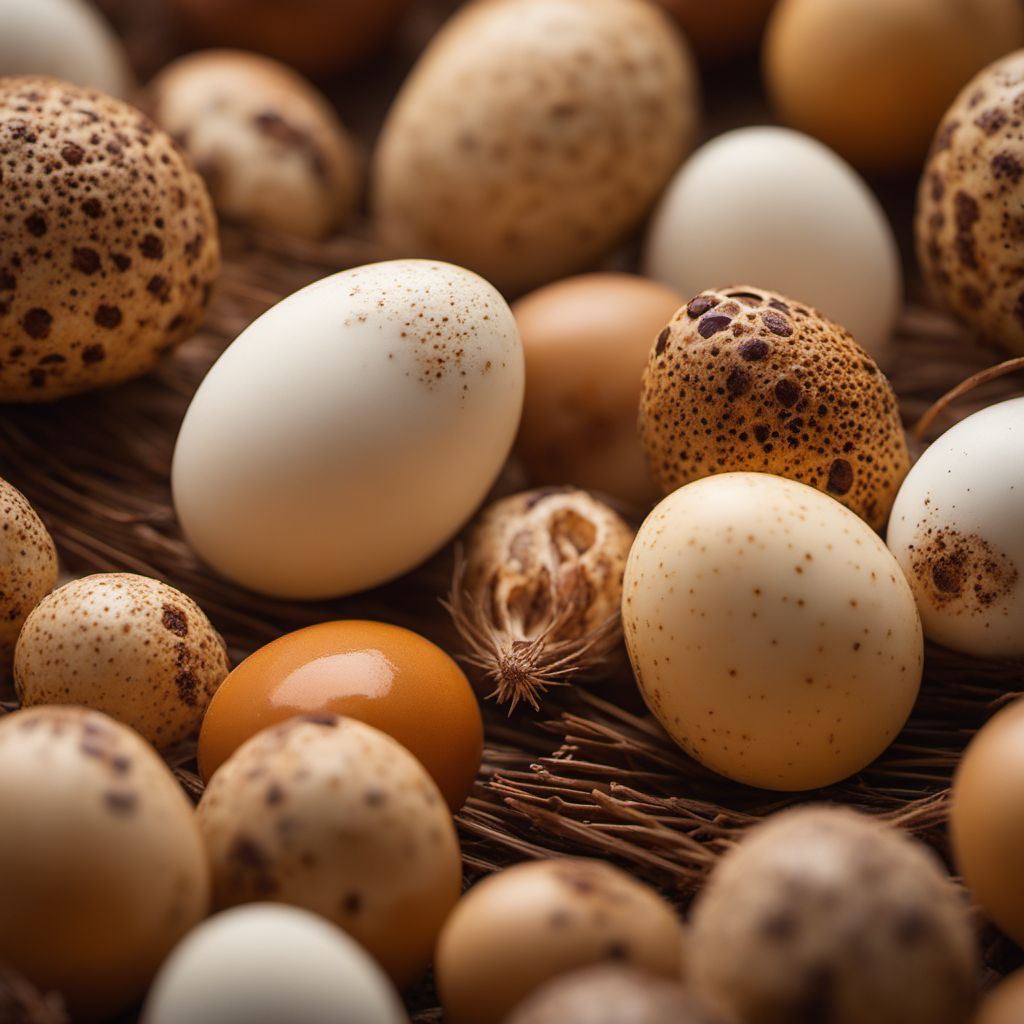
Ingredient
Quail eggs
Tiny Delights: Quail Eggs
Quail eggs are small, about one-fifth the size of a chicken egg, with a speckled shell that can range in color from light brown to blue-green. They have a rich, creamy yolk and a delicate, slightly gamey flavor. The texture is smooth and velvety, making them a delightful addition to various recipes.
Origins and history
Quail eggs have been consumed for centuries and are considered a delicacy in many cultures. They are believed to have originated in East Asia and were later introduced to Europe. Quail eggs have a long history of being used in traditional Chinese, Japanese, and French cuisines. Today, they are enjoyed worldwide for their unique taste and aesthetic appeal.
Nutritional information
Quail eggs are a nutritional powerhouse, packed with essential vitamins and minerals. They are an excellent source of protein, vitamin B12, and selenium. A single quail egg contains approximately 14 calories, 1 gram of protein, and 1 gram of fat. They are also rich in iron, phosphorus, and vitamin A.
Allergens
Quail eggs are not a common allergen, but individuals with egg allergies should exercise caution when consuming them. It is always recommended to consult with a healthcare professional if you have any concerns or known allergies.
How to select
When selecting quail eggs, choose eggs that have clean, uncracked shells. The shells should be free from any discoloration or unusual odors. It is also important to check the expiration date to ensure freshness. Quail eggs can be found in specialty grocery stores, farmers markets, or Asian markets.
Storage recommendations
To maintain the freshness of quail eggs, store them in the refrigerator at a temperature between 35°F and 40°F (2°C and 4°C). It is best to store them with the pointed end facing downwards to help preserve their quality. Use them within 2-3 weeks for the best flavor and texture.
How to produce
Quail eggs can be produced by raising quails in a suitable environment. Quails require proper housing, feeding, and care to ensure optimal egg production. It is advisable to consult with experienced quail farmers or poultry experts for detailed guidance on raising quails and producing quail eggs.
Preparation tips
Quail eggs can be prepared in various ways, including boiling, poaching, frying, or baking. They can be enjoyed on their own as a snack, used as a garnish for salads or appetizers, or incorporated into recipes such as quiches, omelets, or sushi. Their small size and elegant appearance make them a popular choice for decorative purposes in fine dining.
Substitutions
Chicken eggs can be used as a substitute for quail eggs in most recipes, although the taste and appearance will differ. If using chicken eggs as a substitute, adjust the cooking time accordingly. Alternatively, you can use duck eggs, which are larger and have a richer flavor compared to quail eggs.
Culinary uses
Quail eggs are commonly used in gourmet dishes, such as hors d'oeuvres, canapés, or as a topping for salads. They are also a popular ingredient in Asian cuisines, including Chinese tea eggs, Japanese sushi, or Vietnamese balut. Quail eggs can be found in a variety of international cuisines and are often featured in high-end restaurants.
Availability
Quail eggs are commonly available in Asia, Europe, and North America. They can be found in specialty grocery stores, farmers markets, or Asian markets. In some regions, they may be less commonly available and may require special ordering or sourcing.
More ingredients from this category
Recipes using Quail eggs » Browse all
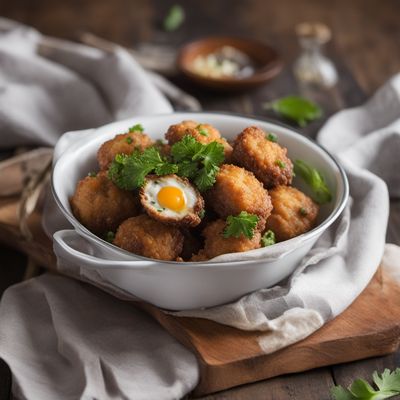
Tokneneng - Filipino-style Fried Quail Eggs
Crispy Delights: Filipino Tokneneng - Irresistible Fried Quail Eggs
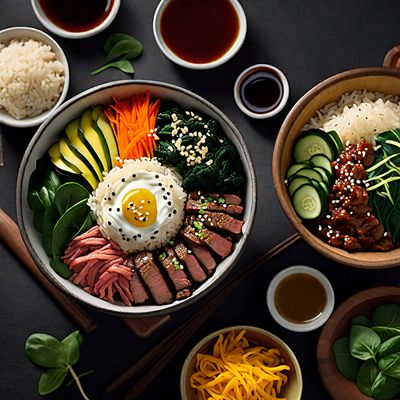
Haute Cuisine Bibimbap
Elevated Bibimbap: A Haute Cuisine Twist on a Korean Classic

Haute Cuisine Tapas
Elevated Spanish Small Plates

Quail with Peas
Savory Delight: Quail with Tender Peas in Italian Style

Lowcountry-style Smoked Quail Adobo
Savory Smoked Quail Adobo with a Lowcountry Twist

Nouvelle Cuisine Tapas
Elevated Spanish Small Plates: A Nouvelle Cuisine Twist

Nouvelle Bibimbap
Elevated Korean Delight: Nouvelle Bibimbap

Grilled Quail with Spiced Coconut Sauce
Tropical Delight: Grilled Quail with East Timorese Coconut Sauce
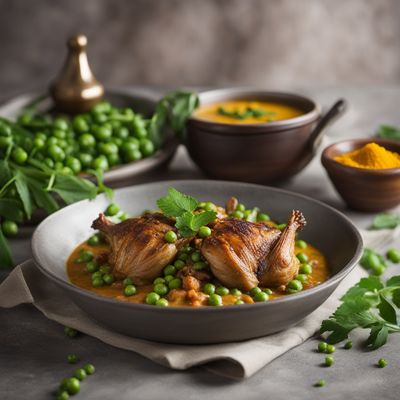
Quail with Peas in Coconut Curry Sauce
Coconut Curry Quail Delight

Nouvelle Cuisine Twist on English Breakfast
Elevated Morning Delight: A Nouvelle Cuisine Take on English Breakfast

Mexican Guajillo Quail in Spicy Sauce
Fiery Delight: Guajillo Quail in Spicy Mexican Sauce
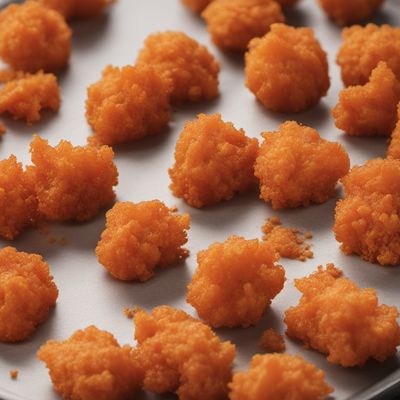
Crispy Golden Kwek Kwek
Fiery Delights: Crispy Golden Kwek Kwek - A Filipino Street Food Favorite
